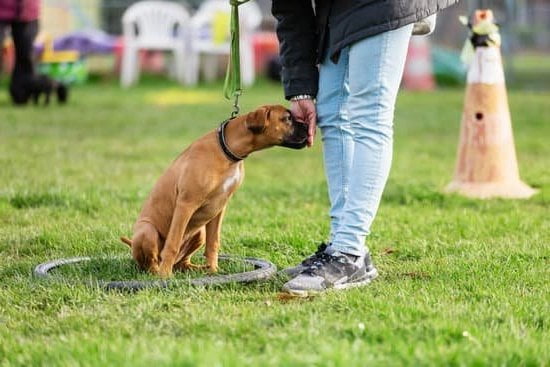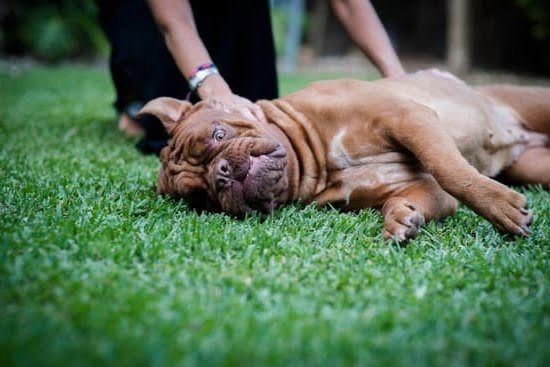Are you interested in learning how to train a dog to track by scent? Scent tracking is not only a fun and stimulating activity for dogs, but it can also be a useful skill in various scenarios.
From search and rescue missions to hunting, scent tracking can be a valuable tool for both dogs and their handlers. In this article, we will explore the concept of scent tracking and provide valuable insights into how you can effectively train your dog in this skill.
Scent tracking is a natural behavior for dogs, as they rely heavily on their keen sense of smell to navigate the world around them. However, training a dog to track specific scents requires patience, consistency, and understanding of the process. In this section, we will delve into the fundamentals of scent tracking, helping you grasp the essential concepts behind this skill.
To begin our journey into scent tracking training, we will first look at the importance of understanding the concept of scent tracking for both dogs and handlers. We will explore how a dog’s sense of smell works and why certain breeds are better suited for scent tracking than others.
Furthermore, we will lay the groundwork for choosing the right breed for scent tracking and understanding their innate abilities when it comes to following scents. Understanding these basic principles is crucial before moving on to more advanced training techniques.
Choosing the Right Breed for Scent Tracking
When it comes to scent tracking, not all dog breeds are created equal. Some breeds have a natural instinct and ability to track scents, while others may struggle with this type of training. Breeds such as Bloodhounds, German Shepherds, Beagles, and Belgian Malinois are known for their exceptional scent tracking abilities. These breeds have a strong sense of smell and a natural drive to follow scents, making them ideal candidates for scent tracking training.
It’s important to consider the breed’s characteristics and instincts when choosing a dog for scent tracking. For example, hound breeds like Bloodhounds and Beagles have been selectively bred for their scent tracking abilities for centuries, making them well-suited for this type of work. On the other hand, herding breeds like German Shepherds and Belgian Malinois also excel in scent tracking due to their high intelligence and strong work ethic.
In addition to considering the breed’s natural abilities, it’s also essential to take into account the individual dog’s temperament and willingness to learn. Look for signs of curiosity, determination, and focus when selecting a candidate for scent tracking training. A dog that exhibits strong interest in following scents and has a high level of energy can be a promising candidate for this type of specialized training.
| Breed | Scent Tracking Ability |
|---|---|
| Bloodhound | Exceptional |
| German Shepherd | Highly Capable |
| Beagle | Natural Instinct |
| Belgian Malinois | Strong Drive |
By carefully selecting the right breed and individual dog for scent tracking training, you can set yourself up for success in this challenging but rewarding activity. Patience is key as you begin the journey of training your chosen pup how to track by scent.
Basic Obedience Training and Commands
When it comes to training a dog to track by scent, it is essential to start with a solid foundation of basic obedience training. This includes teaching fundamental commands such as sit, stay, come, and heel. These commands are crucial for controlling and directing your dog during scent tracking exercises.
One of the key aspects of basic obedience training for scent tracking is the reinforcement of positive behavior. Using treats and praise as rewards can help motivate your dog to follow commands and stay focused during training sessions. Consistency is also important in obedience training, as dogs respond well to routines and clear boundaries.
In addition to basic commands, leash training is an important part of obedience training for scent tracking. Dogs need to be comfortable walking on a leash and responding to cues while on a scent tracking trail. It is essential to practice leash manners and control in various environments to prepare your dog for outdoor scent tracking activities.
| Key Aspects of Basic Obedience Training | Relevance |
|---|---|
| Fundamental commands (sit, stay, come, heel) | Crucial for controlling the dog during scent tracking exercises |
| Positive reinforcement (treats, praise) | Motivates the dog to follow commands and stay focused |
| Consistency in training | Dogs respond well to routines and clear boundaries |
| Leash training | Dogs need to be comfortable walking on a leash during scent tracking activities |
By focusing on basic obedience training and commands, you can lay the groundwork for successful scent tracking training with your dog. Understanding the importance of these foundational skills will set you up for a productive and rewarding journey as you train your dog to track by scent.
Remember that patience and consistency are key when implementing basic obedience training for scent tracking. With dedication and positive reinforcement, you can build a strong bond with your dog while preparing them for more advanced scent tracking techniques as they progress in their training journey.
Introducing the Concept of Scent and Its Importance to the Dog
When it comes to training a dog to track by scent, one of the most important concepts to understand is the dog’s natural ability to use their sense of smell. Dogs have an incredibly powerful sense of smell, and they are capable of picking up and following scent trails with great accuracy. Introducing the concept of scent and its importance to the dog is crucial in preparing them for scent tracking training.
Understanding a Dog’s Sense of Smell
Before beginning scent tracking training, it’s important to understand that a dog’s sense of smell is far more developed than that of humans. Dogs have up to 300 million olfactory receptors in their noses, compared to about 6 million in humans. This means that dogs can pick up scents that are virtually undetectable to us. Understanding this remarkable ability will help you appreciate the potential your dog has for scent tracking.
Building Awareness
In order to train a dog to track by scent, it’s essential to build their awareness and understanding of how important their sense of smell is. This can be done through simple activities such as hiding treats or toys around the house or yard and encouraging your dog to find them using only their nose.
By doing this, you are helping your dog recognize the value of their sense of smell and how it can be used for tracking purposes.
By introducing your dog to the concept of scent and its importance, you are laying the foundation for successful scent tracking training. This will not only enhance your bond with your dog but also prepare them for more advanced scent tracking exercises in the future.
With consistent practice and patience, you will set your dog up for success in learning how to track by scent effectively.
Building the Foundation for Scent Tracking Training
Before diving into the actual training process, it’s important to lay a solid foundation for scent tracking. This includes ensuring that your dog has a strong grasp of basic obedience commands such as “sit,” “stay,” and “come.” These commands form the basis of communication between you and your dog during scent tracking exercises.
Additionally, it’s crucial to introduce the concept of scent and its importance to your dog. You can do this by engaging in activities that encourage your dog to use their sense of smell, such as hiding treats around the house or yard for them to find. This helps your dog understand that their nose is a powerful tool that can lead them to rewards.
One effective way to build the foundation for scent tracking training is by incorporating games into your routine. Games like “find it” or “hide and seek” not only strengthen the bond between you and your dog but also serve as a fun introduction to scent tracking. These activities help sharpen your dog’s natural ability to follow scents, making them more receptive to formal scent tracking training later on.
- Ensure basic obedience commands are mastered
- Introduce the concept of scent and its importance
- Incorporate games like “find it” or “hide and seek”
It’s essential to take your time during this foundational phase and not rush through it. The goal is to instill in your dog a keen interest in using their sense of smell while creating a positive association with scent tracking. By taking these preparatory steps, you’ll set the stage for a successful scent tracking training journey with your furry companion.
Implementing Scent Tracking Exercises and Activities
When it comes to training a dog to track by scent, it is essential to introduce specific exercises and activities that will help develop and hone their natural abilities. Here are some effective methods for implementing scent tracking exercises and activities:
1. Scent articles: Start by introducing your dog to different scents such as essential oils or scent articles. Encourage them to engage with the scents, associating each one with a particular action or behavior.
2. Simple tracking trails: Create simple tracking trails using treats or toys with strong scents. Start with short trails in familiar environments, gradually increasing the length and complexity of the trails as your dog becomes more confident in their tracking abilities.
3. Hide and seek: Play games of hide and seek using scented objects or people, encouraging your dog to use their sense of smell to locate the hidden items or individuals.
These exercises not only aid in developing your dog’s scent tracking abilities but also provide mental stimulation and physical exercise, contributing to a well-rounded training experience for your canine companion.
Remember, consistency is key when implementing these exercises, as it reinforces the learning process for your dog. By incorporating these activities into your training routine, you will be on the right track to nurturing your dog’s natural scent tracking instincts.
Advanced Scent Tracking Techniques and Challenges
Expanding the Search Area
As your dog becomes more proficient in scent tracking, it’s important to increase the difficulty of the exercises. One way to do this is by expanding the search area. Start by introducing longer trails with more twists and turns, and gradually increase the complexity of the trails as your dog becomes more skilled at following scents.
Introducing Distractions
Training your dog to track a scent amidst distractions is a crucial skill for real-life scenarios, such as search and rescue missions. Introduce distractions such as other animal scents, food or toy temptations, and varying terrain to challenge your dog’s ability to stay focused on the target scent.
Nighttime and Urban Tracking
To further enhance your dog’s tracking abilities, consider practicing scent tracking exercises in different environments, including nighttime tracking and urban settings. This will help your dog adapt to different conditions and continue honing their scent tracking skills.
Successfully training a dog to track by scent can be challenging, but also incredibly rewarding. By incorporating these advanced techniques into your training regimen, you can help your canine companion become a skilled scent tracker capable of navigating diverse environments and overcoming various obstacles.
Troubleshooting Common Issues in Scent Tracking Training
When training a dog to track by scent, there are common issues that you may encounter along the way. It’s important to be prepared for these challenges and have strategies in place to address them. One common issue is when the dog becomes easily distracted during scent tracking exercises.
This can happen if there are too many competing scents in the environment or if the dog is not fully focused on the task at hand. To address this issue, it’s important to start training in a quiet, controlled environment and gradually increase distractions as the dog becomes more proficient at tracking.
Another common issue is when the dog has difficulty picking up on a specific scent or loses the trail altogether. This can happen if the scent is too faint or if the dog is not yet familiar with the particular scent they are being asked to track.
In this case, it’s important to go back to basics and reinforce the concept of scent with the dog. You can do this by using familiar scents that the dog already knows well, such as their favorite treat or toy, and gradually introducing new scents for them to track.
Furthermore, some dogs may show reluctance or fear towards certain surfaces or terrains while tracking by scent. It’s important to identify and address any fears or hesitations early on in training to prevent them from becoming ingrained behavior. Introduce your dog gradually to different surfaces such as concrete, grass, gravel etc. so that they become comfortable with all types of terrain.
By understanding these common issues and having strategies in place to address them, you’ll be better equipped to successfully train your dog to track by scent. Remember that patience and consistency are key when troubleshooting these issues, and celebrate small victories along the way as you continue building a strong bond with your canine companion through scent tracking training.
The Importance of Patience and Consistency in Scent Tracking Training
Training a dog to track by scent is no easy feat, and it requires a significant amount of patience and consistency. Scent tracking is a complex skill that takes time for the dog to fully understand and master. It’s important for dog owners to be patient with their furry companions and provide consistent, ongoing training to achieve successful results.
One of the most crucial aspects of scent tracking training is understanding that each dog progresses at its own pace. Some dogs may pick up on scent tracking quickly, while others may take longer to grasp the concept.
It’s essential for dog owners to remain patient and avoid getting frustrated if their dog doesn’t progress as quickly as they had hoped. Consistent training over time will yield positive results, so it’s important to be patient and not rush the process.
Consistency in training methods is also key when teaching a dog to track by scent. Dogs thrive on routine, so using consistent commands, techniques, and exercises will help them better understand what is expected of them during scent tracking training sessions. Additionally, consistently practicing scent tracking exercises will reinforce the skills the dog has learned and help them become more proficient in picking up scents and following tracks.
Furthermore, patience and consistency go hand in hand when building a strong bond between the dog and its owner. By being patient with the dog during training sessions and consistently working with them to improve their scent tracking abilities, owners can strengthen their relationship with their furry companion. This bond is essential for effective communication during scent tracking activities and will ultimately lead to greater success in the training process.
Celebrating Success and Bonding With Your Scent Tracking Dog
In conclusion, training a dog to track by scent can be a rewarding and fulfilling experience for both the dog and the owner. It requires a deep understanding of the concept of scent tracking, as well as patience and consistency in implementing training techniques. Choosing the right breed for scent tracking is crucial, as some dogs have a natural inclination for this skill.
Basic obedience training is essential before introducing the concept of scent tracking to a dog. Building a strong foundation through bonding activities and exercises will help develop the necessary skills for advanced scent tracking techniques and challenges.
It is important to remember that scent tracking training requires patience and consistency. Celebrating success with your dog not only reinforces positive behavior but also strengthens the bond between you and your furry companion. By following these guidelines on how to train a dog to track by scent, owners can enjoy an enriching experience while building an extraordinary partnership with their dog.
Frequently Asked Questions
How Do I Teach My Dog to Track a Scent?
Teaching your dog to track a scent involves starting with the basics of scent detection training. This can be done by using scent-detection toys or treats to get your dog accustomed to following a specific smell. Gradually, you can introduce more complex scents and create tracking trails for your dog to follow.
How Do Tracking Dogs Know Which Scent to Follow?
Tracking dogs are trained to distinguish between different scents through the use of positive reinforcement and repetition during their training. Handlers often use unique scents that the dog associates with a specific target, such as a missing person or a particular illegal substance. Over time, the dogs learn to focus on the desired scent and ignore distractions.
How Long Does Scent Last for a Dog to Track?
The duration that a scent lasts for a dog to track can vary depending on environmental factors like weather, wind, and terrain. Generally, a strong scent may last for several hours or even days if the conditions are favorable.
However, in less than ideal conditions, such as heavy rain or extreme heat, scents will dissipate more quickly making tracking more challenging for the dog.

Welcome to the blog! I am a professional dog trainer and have been working with dogs for many years. In this blog, I will be discussing various topics related to dog training, including tips, tricks, and advice. I hope you find this information helpful and informative. Thanks for reading!





